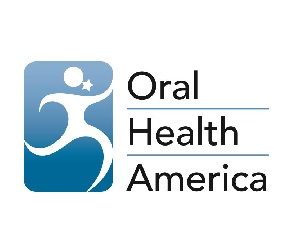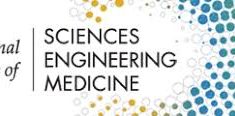Oral Health America state of decay, Older Americans without oral healthcare, State of decay, Limited access to dental insurance and affordable dental services
From Oral Health America.
“State of Decay
Are Older Americans Coming of Age Without Oral Healthcare?”
“The oral health of older Americans is in a state of decay. The reasons for this are complex.
Limited access to dental insurance, affordable dental services, community water fluoridation, and
programs that support oral health prevention and education for older Americans are significant
factors that contribute to the unmet dental needs and edentulism among older adults, particularly
those most vulnerable. While improvements in oral health across the lifespan have been observed
in the last half century, long term concern may be warranted for the 10,000 Americans retiring
daily, as it is estimated that only 2 percent of this “silver tsunami”—baby boomers turning age
65, will have access to dental insurance benefits.”
“This analysis asks and begins to answer the question: “Are Americans coming of age without
oral healthcare?” by noting service gaps and identifying areas for improvement and policy
development in both the public health and healthcare delivery arenas. It provides a tool for states
to use in addressing shortfalls in oral health status, dental professional access sites, dental
benefits for low income adults, and population based prevention, all of which affect the oral
health of older adults.
The final evaluations for each state are variable, with most states performing well on some
contributing factors, but still in need of much improvement in other important areas. Seventeen
states received a “poor” score of below 50 percent of the possible top score. The top findings of
this report that require scrutiny and action are:
Persistent lack of oral health coverage across much of the nation. Forty-two percent
of states (21 states) provide either no dental benefit or emergency coverage only through
adult Medicaid Dental Benefits.
Strained dental health work force. Thirty-one states (62 percent) have high rates of
Dental Health Provider Shortage Areas (HPSAs), meeting only 40 percent or less of
dental provider needs.
Tooth loss remains a signal of suboptimal oral health. Eight states had strikingly high
rates of edentulism, with West Virginia notably having an adult population that is 33.8
percent edentate.
Deficiencies in preventive programs. Thirteen states (26 percent) have 60 percent or
more residents living in communities without water fluoridation (CWF), despite
recognition for 68 years that this public health measure markedly reduces dental caries.
Hawaii (89.2 percent) and New Jersey (86.5 percent) represent the highest rates of
citizens unprotected by fluoridation, an unnecessary public peril.”
“Older adults make up one of the fastest growing segments of the American population. In 2009,
39.6 million seniors were U.S. residents. This aging cohort is expected to reach 72.1 million by
2030 — an increase of 82 percent.
Dental Health and Disparities: Older adults experience an increased risk for oral conditions
such as edentulism, oral cancer, and periodontal disease. The reasons for this vary but are often
related to age-associated physiologic changes, underlying chronic diseases, race, gender, and the
use of various medications.
These oral conditions disproportionately affect persons with low
income, racial and ethnic minorities, and those who have limited or no access to dental
insurance. Older adults with physical and intellectual disabilities and those persons who are
homebound or institutionalized are also at greater risk for poor oral health.
As examples of these disparities, older African American adults are 1.88 times more likely than
their white counterparts to have periodontitis; low-income older adults suffer more than twice
the rate of gum disease than their more affluent peers (17.49 verses 8.62 respectively); and
Americans who live in poverty are 61 percent more likely to have lost all of their teeth when
compared to those in higher socioeconomic groups.
Edentulism and Overall Health: Despite these existing conditions, recent dental public health
trends demonstrate that as the population at large ages, older Americans are increasingly
retaining their natural teeth.
Today, many older adults benefit from healthy aging associated
with the retention of their natural teeth, improvements in their ability to chew, and the ability to
enjoy a variety of food choices not previously experienced by earlier generations of their peers.
Oral health data reveals that many older adults experience adverse oral health associated with
chronic and systemic health conditions. For example, associations between periodontitis and
diabetes have emerged in recent years, as well as oral conditions such as xerostomia associated
with the use of prescription drugs.
Xerostomia, commonly known as dry mouth, contributes to
the inception and progression of dental caries (cavities). For older Americans, the occurrence or
recurrence of dental caries coupled with an inability to access treatment may lead to significant
pain and suffering along with other detrimental health effects.
Oral Care Provider Issues: Although a growing number of older Americans need oral
healthcare, the current workforce is challenged to meet the needs of older adults. The current
dental workforce is aging, and many dental professionals will retire within the next decade.2 A
lack of geriatric specialty programs complicates this problem, and few practitioners are choosing
geriatrics as their field of choice. Emergency rooms are seeing the results of this shrinking
workforce; emergency room visits that were dental related among adults over 65 rose from 1
million from 1999-2000 to 2.3 million during 2009–2010.1 8
While these trends are favorable, adverse oral health consequences are emerging. Due to reasons
stated in this report, together with increased demand for services, lack of access to dental
benefits through Medicare, increased morbidity and mobility among older adults, and reduced
income associated with aging and retirement, many older Americans are unable to access oral
health care services. As a result, many older adults who have retained their natural teeth are now
experiencing dental problems.
Access to dental care is one of the greatest challenges facing older adults and their care
advisors. The reasons for this vary; however, access to dental insurance is a major factor.
Children’s dental coverage was addressed in the Patient Protection and Affordable Care Act
(ACA), and is more readily available through private or public mechanisms like the Medicaid,
Early Periodic Screening, Diagnosis, and Treatment Program and the Children’s Health
Insurance Program.
Access to dental coverage for older adults is limited. It was not addressed in the ACA. Private
insurance for older adults is costly, and public insurance for low-income adults via Medicaid is
limited by state programs, and is virtually nonexistent in Medicare.
Dental insurance coverage is a primary indicator of whether or not an individual visits the
dentist. Older adults with dental insurance are 2.5 times more likely to visit the dentist on a
regular basis.9 A recent Oral Health America, Harris Interactive Public Opinion Survey revealed
that for people who earn less than $35,000 per year, costs are driving their decision to seek care.
More than half in this income group reported that they do not visit the dentist routinely because
they lack insurance or because they cannot afford to visit the dentist. If these low income seniors
were faced with the need for a dental procedure such as a crown, implant, or bridge, many say they could not afford it. Two-thirds of those with an income less than $35,000 per year say they could not afford a procedure of this type.
Close to 70 percent of older Americans do not have dental insurance.
11 The primary reason is because the two major public health insurance programs serving older adults have little or no dental benefits for older adults. Medicare, the largest health insurance provider for individuals 65
and older, does not provide coverage for routine dental care. In fact, less than one percent of
dental services are covered by Medicare.12 About half of older Americans purchase Medigap, a
type of supplemental private insurance to Medicare, which does not cover dental services.
Medicaid is the federal-state partnership program that provides health care coverage for lowincome
Americans. Under federal law, dental benefits are an optional service for state Medicaid
programs. As such, states have the flexibility to include adult dental benefits in their Medicaid
programs. Many states do provide dental benefits for their adult beneficiaries; however, the
status and extent of those benefits vary by state and year, depending upon the availability of state
funds to support such benefits. In states that do include adult dental coverage in their Medicaid
programs, access to dental providers can still be challenging for older adults as limitations in
reimbursement rates serve as a disincentive to provider networks.”
Read more:
http://s.bsd.net/teeth/default/page/-/SODUpdate10.15.pdf




[…] Dental services are extremely expensive and out of reach for many. Consider the following. http://eachstorytold.com/2018/04/17/oral-health-america-state-of-decay-older-americans-without-oral-… Dental care is one of the great untold stories in our society. This must change. By the way, […]